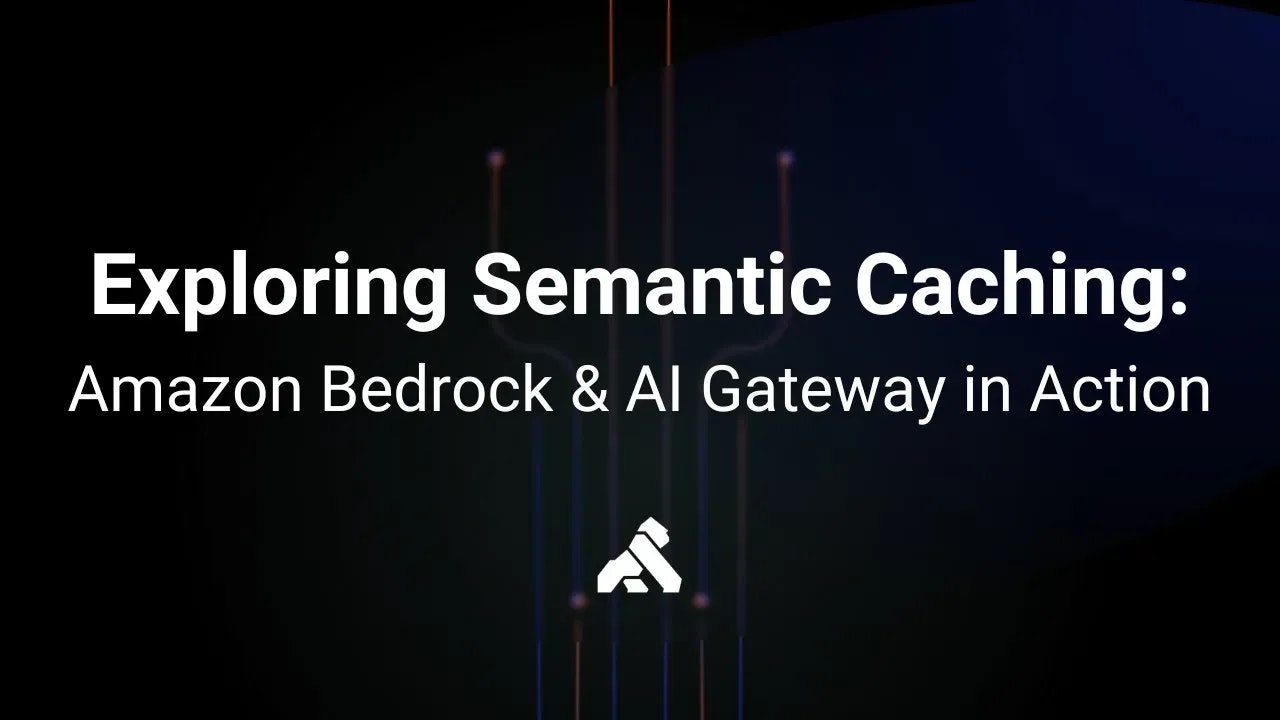Model fallback and retries: building resilience
Service continuity through model fallback
Think of model fallback as the safety net for your tightrope walk. In the world of AI, things don't always go as planned—models can experience downtime, latency spikes, or unexpected errors. By setting up backup models to take over when the primary model becomes unavailable or unresponsive, you ensure that your service remains operational even when things go awry.
When selecting fallback models, it's crucial to consider the trade-offs between model quality, cost, and availability. While a high-quality model may be your first choice, it's wise to have a slightly less accurate but more reliable model as a fallback option to maintain service continuity.
Intelligent retries
Retry logic, with exponential backoff and circuit breakers, minimizes disruption when transient issues occur. Instead of immediately failing a request, the system can automatically retry it, giving the AI model a second chance to respond.
To avoid overwhelming the AI service, it's essential to implement intelligent retry logic that includes:
- Exponential Backoff: Gradually increasing the delay between retries to avoid hammering the AI model with repeated requests
- Circuit Breakers: Preventing retries altogether if the AI model has consistently failed over a certain period, giving it time to recover
Balancing persistence and cost is key. While you want to ensure that requests are eventually processed, you also want to avoid excessive retries that can lead to increased costs and resource consumption.
Ensuring Service Continuity with Kong
Kong provides robust tools to maintain service continuity through model fallback and intelligent retry mechanisms:
Model Fallback with Kong Ingress Controller: Kong's Ingress Controller supports a Fallback Configuration feature that allows the system to isolate and exclude faulty configurations, ensuring that unaffected services continue to operate smoothly. This mechanism helps maintain uptime even when individual components encounter issues.
Intelligent Retries and Circuit Breakers: Kong Mesh enables the configuration of retry policies with exponential backoff strategies for HTTP, gRPC, and TCP protocols. This approach minimizes disruption by automatically retrying failed requests with increasing intervals, reducing the risk of overwhelming services. Additionally, circuit breaker patterns can be implemented to prevent repeated calls to failing services, allowing them time to recover.
By integrating these features, Kong ensures that your AI services remain resilient, providing consistent performance even in the face of unexpected disruptions.
How load balancing distributes your AI workload
Why load balancing matters
Load balancing ensures that no AI model or provider is overburdened, thereby optimizing performance and preventing single points of failure.
Imagine a scenario where all your AI requests are directed to a single provider or model. If that provider experiences an outage or becomes overwhelmed with traffic, your entire AI infrastructure comes to a halt. Load balancing mitigates this risk by distributing requests across multiple providers or models, ensuring service continuity even if one component fails.
Moreover, load balancing allows you to leverage the strengths of different AI providers or models. Some providers may excel at handling certain types of requests, while others may offer better performance or cost-efficiency for specific workloads. By intelligently routing requests based on their characteristics, you can optimize the overall performance and cost of your AI infrastructure.
Advanced load balancing algorithms
These algorithms are like traffic lights that adapt in real-time to changing conditions. They go beyond simple round-robin or weighted distribution to make sophisticated routing decisions:
- Semantic Routing: Directs requests to different AI models based on the type or complexity of the request. For example, complex queries might be routed to more powerful AI models, while simple queries can be handled by less expensive models.
- Cost-Aware Distribution: Routes requests based on the cost implications of using different AI models or providers. This approach optimizes costs by directing traffic to the most cost-effective option while maintaining performance standards.
- Performance-Based Distribution: Dynamically adjusts the distribution of requests based on real-time performance metrics such as response times, error rates, and throughput. This ensures that requests are always routed to the fastest and most responsive option.
Kong AI Gateway: six new algorithms
Kong, a leading API gateway and management platform, has introduced six new load-balancing algorithms specifically designed for AI traffic. These algorithms enable more granular and intelligent control over how AI workloads are distributed:
- Dynamic Round Robin: Evenly distributes requests across available servers, dynamically adjusting based on server health and response times
- Weighted Round Robin: Allows you to assign weights to different servers, prioritizing those with more capacity or better performance
- Least Connections: Directs traffic to the server with the fewest active connections, ensuring balanced utilization
- Consistent Hashing: Routes requests based on a hash of the client IP or other identifier, ensuring that requests from the same client are consistently routed to the same server
- Latency-Aware Routing: Prioritizes servers with the lowest latency, optimizing response times for end-users
- Adaptive Load Balancing: Dynamically adjusts the distribution of traffic based on real-time performance metrics, ensuring optimal resource utilization and responsiveness
Check out Kong's new load-balancing features for AI traffic
Dynamic solutions for traffic spikes
Traffic patterns are rarely predictable. There can be sudden surges in demand due to marketing campaigns, seasonal events, or unexpected viral content. To handle these traffic spikes effectively, you need dynamic solutions that can adapt in real-time:
- Predictive Scaling: Leveraging machine learning to forecast incoming loads based on historical data and automatically scale AI resources in advance. This ensures sufficient capacity to handle anticipated traffic without over-provisioning.
- Adaptive Rate Limiting: Dynamically adjusting rate limits based on real-time system conditions. During peak hours, you might temporarily reduce rate limits for non-critical applications to ensure critical applications have enough resources.
These approaches allow your AI infrastructure to proactively adapt to changing conditions rather than merely reacting to problems after they occur.
Adaptive management
Adaptive management brings context to rate limiting and resource allocation by taking into account the specific circumstances of each request:
- Contextual Rate Limiting: Setting different rate limits based on user roles, content types, or time of day. For example, you might offer higher rate limits to premium users or reduce rate limits during off-peak hours to optimize resource utilization.
- Automated Alerts: Configuring real-time alerts that trigger when certain thresholds are exceeded, allowing you to take proactive measures to adjust configurations and prevent performance degradation or cost overruns.
This contextual awareness ensures that your AI gateway makes intelligent decisions that balance performance, cost, and user experience based on the specific circumstances of each request.
Kong provides a suite of tools to dynamically manage traffic, ensuring optimal cost-efficiency and performance even during unpredictable demand surges:
- Adaptive Rate Limiting: With Kong's Rate Limiting Advanced plugin, you can implement contextual rate limiting strategies. This allows for dynamic adjustments based on user roles, content types, or time of day, ensuring that critical applications maintain performance during peak traffic periods
- Tiered Access Control: Kong's AI Gateway supports token-based rate limiting and tiered access policies. This enables you to offer differentiated service levels, granting higher rate limits to premium users while managing resource consumption effectively
- Real-Time Monitoring and Alerts: By integrating with monitoring tools like OpenTelemetry, Kong allows you to configure real-time alerts based on predefined thresholds. This proactive approach helps in identifying and addressing potential performance issues before they escalate .
By leveraging these capabilities, Kong ensures that your AI infrastructure remains resilient, cost-effective, and responsive to varying traffic demands.
Strategic wrap-up
As AI and LLM technologies continue to evolve and permeate every aspect of business operations, managing the resulting traffic effectively becomes increasingly critical. The AI gateway emerges as the essential tool for taming the Wild West of AI requests, bringing order, efficiency, and cost control to your AI infrastructure.
Let's recap the key strategies for mastering AI/LLM traffic management:
- Rate Limiting: Control the flow of requests to prevent system overload and ensure fair usage
- Caching Mechanisms: Store and reuse responses to reduce latency and minimize API calls
- Model Fallback and Retries: Ensure service continuity even when primary models fail
- Load Balancing: Distribute requests across multiple providers or models to optimize performance
- Performance and Cost Optimization: Implement dynamic solutions that adapt to changing conditions
- Systematic Implementation: Follow a structured approach to deploy and maintain your AI gateway
By implementing these strategies through an intelligent AI gateway, you can transform your AI Wild West into a well-orchestrated metropolis of efficiency and scale. You'll keep your AI traffic under control, your users delighted, and your costs in check.
The time to act is now. Evaluate various gateway solutions for their robust, adaptive features designed to unsnarl the AI traffic chaos. Implement an AI gateway that aligns with your specific needs and begin reaping the benefits of controlled, optimized AI traffic!




